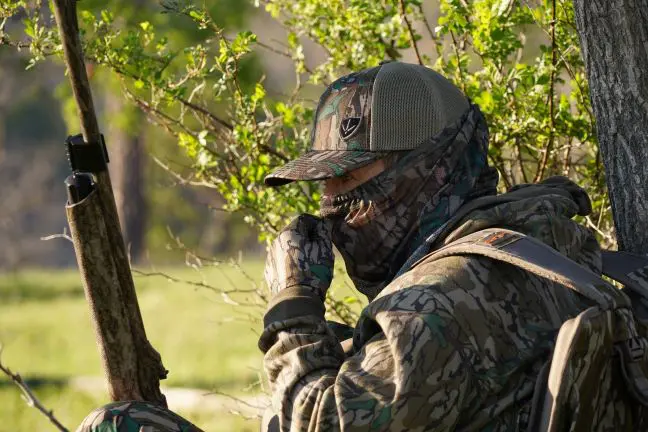Late-season turkey hunting presents unique challenges for even the most seasoned hunters. As the breeding season winds down and turkeys become more wary of hunting pressure, calling in a mature Tom can feel like an uphill battle. However, you can succeed even in the most challenging conditions with the right tactics and calls.
I encountered challenges during a late-season hunting expedition in Missouri a few years back. In the weeks leading up to the season, I suffered a lower back injury, severely limiting my mobility in sitting and walking—essential actions for any hunter. Finally feeling well enough to venture out, I had only three days left in the three-week-long season. On one of those mornings, I faced yet another hurdle: the gobbler I was after had roosted on the far side of a swiftly flowing river. Given my physical condition, wading across was out of the question. Instead, I opted to situate myself on a hillside and attempt to lure him over with my calls. Any seasoned turkey hunter knows the difficulty of such a feat. However, to my surprise, after a few soft purrs and raspy yelps, the tom responded eagerly, taking flight towards me. He touched down thirty yards down the slope from where I sat, then confidently strutted within twelve steps, offering me the perfect shot. It was a remarkable feat for that late-season gobbler, with his intention set on crossing the river to seek the companionship of a hen.
In this late-season guide, we’ll explore three essential calls that can work magic during the late season. They may not always bring a turkey across a flowing river, but they will help you bring those elusive gobblers within close range.
Low Volume/Soft Calls
Although I didn’t get to hunt much during the spring of my injury, a few neighboring hunters had told me a tom was staying near the area, but he was hard to call. By his uncharacteristic response that morning, I could tell he had been over-called throughout the season.
During the late season, turkeys have become accustomed to the sounds of hunters and can become wary of loud, aggressive calls. This is where low volume and soft calls shine. Purrs and gentle hen yelps mimic the sounds of contented hens going about their day rather than the aggressive calling often associated with hunters. Gobblers, who have grown wise to the difference, are more likely to respond positively to these subtle, natural sounds. By mastering the art of soft calling, you can effectively deceive even the most cautious of Toms, enticing them to come within range.
Lone Hen Yelp
As the breeding season ends, most hens have already been bred and are focused on nesting. This leaves many gobblers searching for lone hens who may still be receptive to mating. Mimicking the call of a solitary hen can be incredibly effective during the late season, as it signals to nearby toms that there’s still an opportunity to breed. Often, hunters lighten up their turkey vest during late season by eliminating their calls to one or two choices. By sounding like a single hen searching for a mate, you can lure gobblers out of their hiding spots and into your line of sight. Mastering the subtle nuances of the lone hen yelp can make all the difference in coaxing a weary gobbler within shooting range.
Crow Call
While the crow call is a staple in any turkey hunter’s arsenal, its effectiveness is particularly pronounced during the late season. As gobblers become more hesitant to respond to traditional turkey calls, the distinct caw of a crow can serve as a powerful locator call. By mimicking the sound of a crow, you can pinpoint the location of nearby gobblers and keep them gobbling while you close the distance. Use the crow call to keep the gobbler located and gobbling until the last moment when you’re ready to bring him into shooting range. Then, employ the soft hen yelp.
When a hen exhibits less interest in her calls, it often sparks the gobbler’s curiosity, enticing him to come within range. I have had late-season gobblers who did not want to gobble early in the mornings while still on the roost. Yet, when I used my crow call, or a crow flying by would caw, he would answer. When this happens, I keep my mouth call silenced until he flies off the roost, and I can tell where he is headed. Then, I will make the softest hen yelp to give up my location. The crow call’s versatility and ability to cut through the late-season silence make it an invaluable tool for any hunter.
Late-season turkey hunting, though challenging, is not impossible. With the right calls and techniques, success in bringing those wary gobblers within range is within your grasp. Incorporating low-volume/soft calls, lone hen yelps, and a crow call into your hunting strategy will significantly increase your chances of outsmarting even the most elusive toms. Remember to stay patient, adapt to the changing conditions, and enjoy the thrill of the hunt. With persistence and skill, you’ll be rewarded with a memorable late-season turkey harvest.

